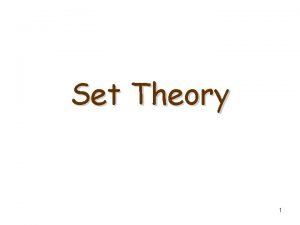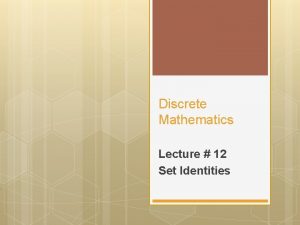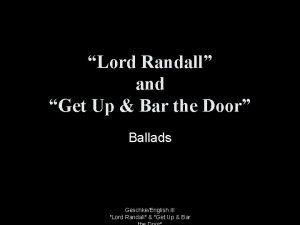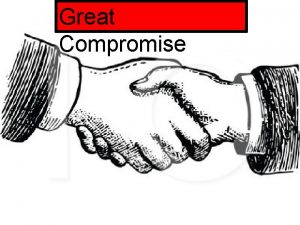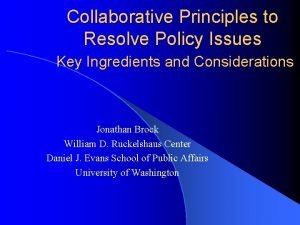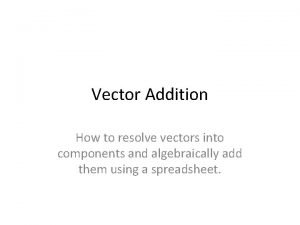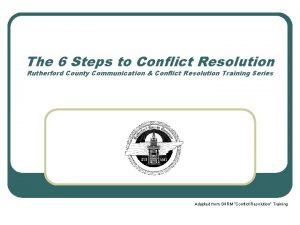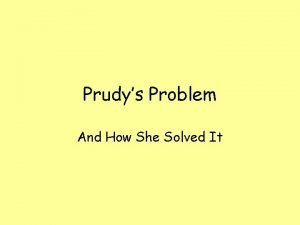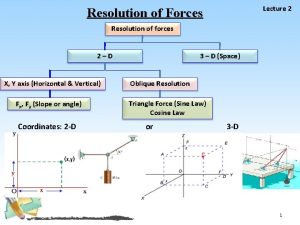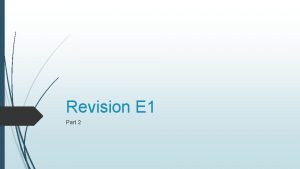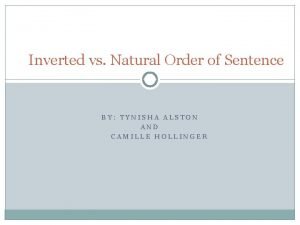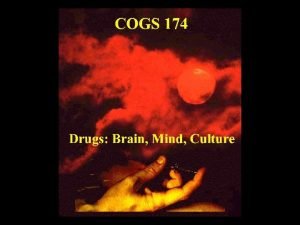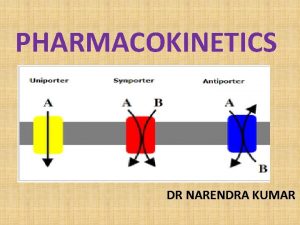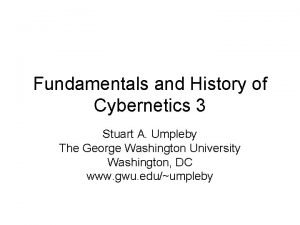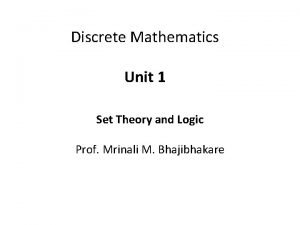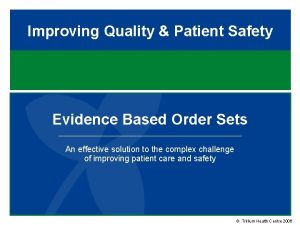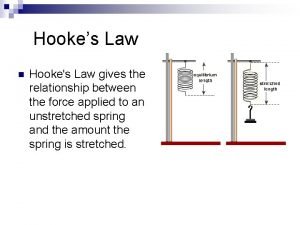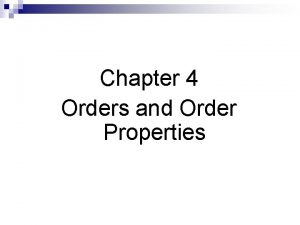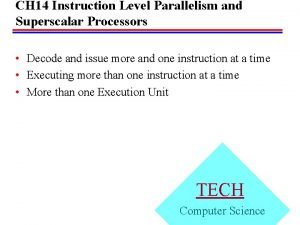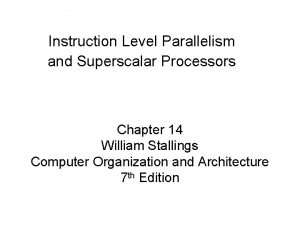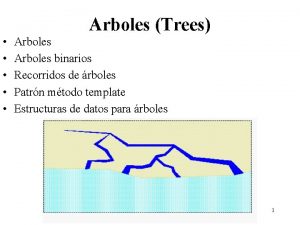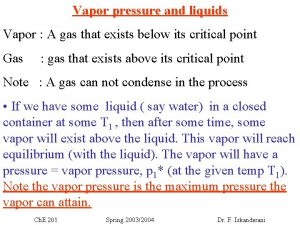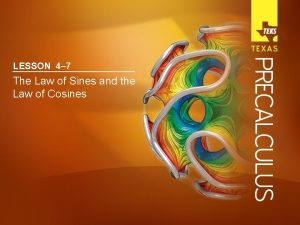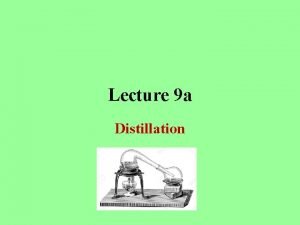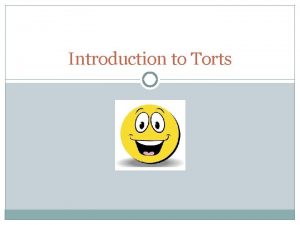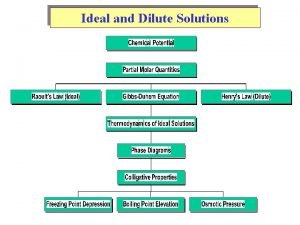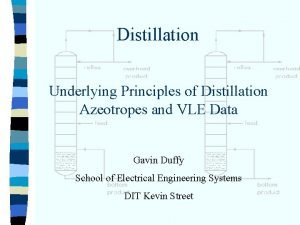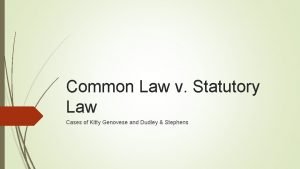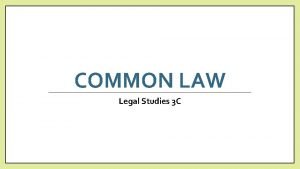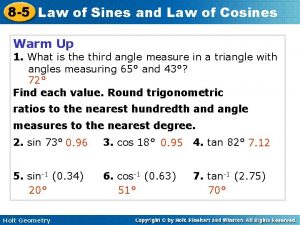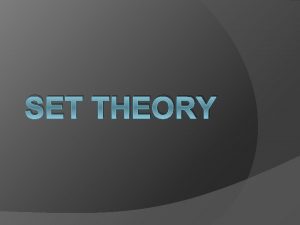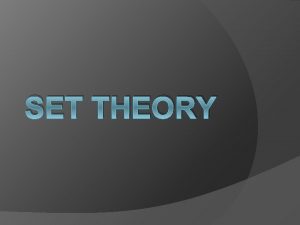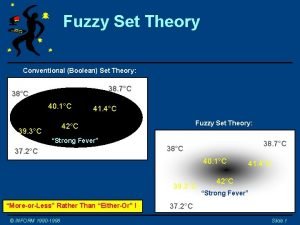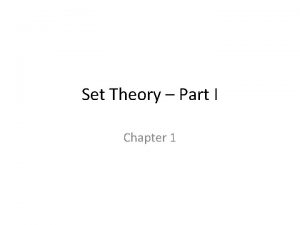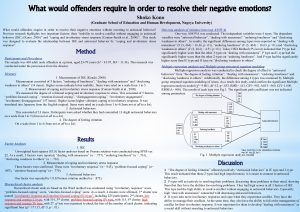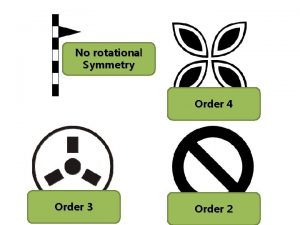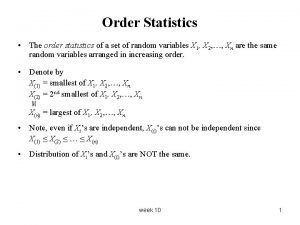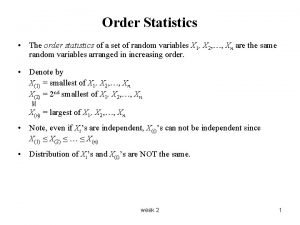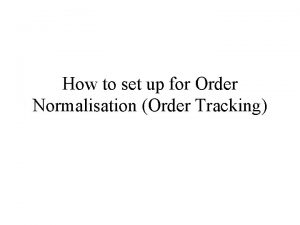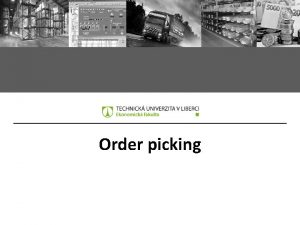Law and Set theory in order to resolve


























































- Slides: 58

Law and Set theory in order to resolve the most difficult legal problems. 1 st April, 2015 KAGAYAMA Shigeru (1948 -) Professor of Law of Meiji Gakuin University 1

Table of contents n I. Introduction of Law and Set theory n n 1. What is law? 2. What is the function of law? n 3. What is the process of resolving disputes by law? 4. Meaning of understanding of provisions of law n II. Legal way of thinking n n n IV. The elements of set theory 1. What is IRAC? – Legal way of thinking 2. An example of dispute 3. Toulmin Diagram of Art. 709, 720 Civ. Code of Japan 4. Legal report of the accident by IRAC n III. Representation of System of law by electric circuit n 1. System of torts law (1/3) (2/3) (3/3) n 2. Common structure of provisions of law n Logic and set theory (1/5) (2/5) (3/5) (4/5) (5/5) V. True requirements and apparent requirements in provisions of law n 1. Arte. 770 Civ. Code of Japan (Judicial Divorce) n 2. Difference between true and apparent requirements n VI. The most difficult legal interpretation problems in Japan n n 1. An example of the most difficult problems 2. Art. 612 Civ. Code of Japan 3. Toulmin diagram of Art. 612 Civ. Code of Japan 4. An judgment of Art. 612 Civ. Code of Japan 5. A proposal of amendment of Art. 612 Civ. Code of Japan n Reference (1/3) (2/3) (3/3) 2

Table of exercises n Exercise 1: What is law? n Exercise 2: Legal way of thinking n Exercise 3: Legal system and individual provisions of law n Exercise 4: Elements of set theory n Exerces 5: Distinction between true requirements and apparent requirements n Exercise 6: The most difficult provision for interpretation n Exercise 7: Comprehensive problems 3

I. Introduction of Law & Set theory 1. What is the law? 2. What is the function of law? 3. What is the role of legal professionals? 4

What is law? n Human beings are the social animal and can not live alone. n The social life requires rules under which Aristotle good work for others should be rewarded and bad work against others (torts/crime) should be punished. n Through this process a trust relationship will be built among all members of the society. n Therefore, law is the social rule to maintain the peace and order (in which rights and dignity of individuals are protected). 5

What is the function of law? n. The law has two functions. n 1. The first is to resolve the dispute reasonably and peacefully. n. Jhering wrote in “The struggle for law” (1915), n “The end of the law is peace. Rudolph von Jhering n The means to that end is war. ” n. I think, however, “the means is not war but argument”. n 2. The second is to prevent the dispute, by exposing all the process to the public how to resolve disputes by law. 6

What is the process of resolving disputes by law? 1. The judge finds facts, by listening to the assertions of both the plaintiff and the defendant (cf. a pair of balances), without prejudice (cf. bandage). 2. The judge discovers the most appropriate law and applies it to the facts. 3. The judge holds the judgment according to the law and it will be enforced by authority (cf. sword). 7

Meaning of understanding of articles or provisions of law n In Japan, the final means of settlement of disputes is a judgment made by the judge. n According to the Art. 76 paragraph 2 of Constitution of Japan, the judge should be settled the dispute in accordance with the constitution and laws. n When we are familiar with the same way of thinking compendium of the as judges (it is called as IRAC), it is possible to predict Aconstitution and laws the judgment of resolution of the dispute. (863/1935 laws) n Therefore, we become able to propose the most appropriate solution like a judge and to resolve the dispute with a consent of every one. 8

Exercise 1: What is law? →ex. 2 1. Recollect the image of the statue of Themis who is a goddess of the law. And examine what is the symbolic meaning of her scales, her bandage and her sword. And then, explain what is the law. 2. How many statutory laws are in Japan? How many government ordinance, ministerial ordinance and regulations are there in Japan? And examine how many laws are recorded in you compendium of laws? 3. Explain the reason for necessity of interpretation of the law, in spite of lots of laws, ordinance and regulations which are provided in detail, mentioning one provision of law as an example. 9

II. Legal way of thinking n. What is IRAC? n. An example of dispute n. Toulmin Diagram n. Legal report by IRAC 10

Legal professionals’ way of thinking We call it as “IRAC” IRAC indicate us to analyze, argue and draw a conclusion Analysis I Issue Finding data & facts R Rules Finding Rules applicable to facts Application of Rules, Drawing a tentative conclusions Argument against / for tentative conclusions A Argument C Conclusion Finding final conclusion 11

Legal professionals’ way of thinking We call it as “IRAC” IRAC indicate us to analyze, argue and draw a conclusion Analysis I Issue Finding data & facts R Rules Finding Rules applicable to facts Application of Rules, Drawing a tentative conclusions Argument against / for tentative conclusions A Argument C Conclusion Finding final conclusion 12

Legal professionals’ way of thinking We call it as “IRAC” IRAC indicate us to analyze, argue and draw a conclusion Analysis I Issue Finding data & facts R Rules Finding Rules applicable to facts Application of Rules, Drawing a tentative conclusions Argument against / for tentative conclusions A Argument C Conclusion Finding final conclusion 13

Legal professionals’ way of thinking We call it as “IRAC” IRAC indicate us to analyze, argue and draw a conclusion Analysis I Issue Finding data & facts R Rules Finding Rules applicable to facts Application of Rules, Drawing a tentative conclusions Argument against / for tentative conclusions A Argument C Conclusion Finding final conclusion 14

Legal professionals’ way of thinking We call it as “IRAC” IRAC indicate us to analyze, argue and draw a conclusion Analysis I Issue Finding data & facts R Rules Finding Rules applicable to facts Application of Rules, Drawing a tentative conclusions Argument against / for tentative conclusions A Argument C Conclusion Finding final conclusion 15

Legal professionals’ way of thinking We call it as “IRAC” IRAC indicate us to analyze, argue and draw a conclusion Analysis I Issue Finding data & facts R Rules Finding Rules applicable to facts Application of Rules, Drawing a tentative conclusions Argument against / for tentative conclusions A Argument C Conclusion Finding final conclusion 16

Legal professionals’ way of thinking We call it as “IRAC” IRAC indicate us to analyze, argue and draw a conclusion Analysis I Issue Finding data & facts R Rules Finding Rules applicable to facts Application of Rules, Drawing a tentative conclusions Argument against / for tentative conclusions A Argument C Conclusion Finding final conclusion 17

An Example of dispute The defendant is liable for damage caused to the plaintiff? Plaintiff Missingi B A Defendant n The defendant turned his steering quickly in order to escape oncoming vehicle which headed beyond the lane. n As a result the defendant collided with plaintiff as an emergency evacuation. 18

Toulmin Diagram of Art. 709, 720 The defendant collided with plaintiff by negligence of inattentive driving and caused damage to plaintiff. probably error Probability Data Art. 709 Civil Code of Japan: A person who has intentionally or negligently infringed any right of others, shall be liable to compensate any damages resulting in consequence. Warrant Rebuttal Baking The defendant is liable for damage caused to the plaintiff. Claim The defendant collided with plaintiff as an emergency evacuation. Therefore the defendant is not liable against the plaintiff according to Art. 720 Civ. Code. The system of torts law 19

Legal report of the accident by IRAC I • The defendant collided with plaintiff by negligence of inattentive driving and caused damage (serious injury of complete recovery three months) to plaintiff. R • A person who has intentionally or negligently infringed any right of others, or legally protected interest of others, shall be liable to compensate any damages resulting in consequence (Art. 709 Civ. Code of Japan). A • The defendant turned his steering wheel quickly to left in order to escape oncoming vehicle which headed beyond the lane. As a result the defendant collided with plaintiff as an emergency evacuation. Therefore Art. 720 of Civ. Code of Japan should be applied. C • Even if the article 709 (a principle) is applicable, the defendant is not liable against the plaintiff according to the article 720 of the Civil Code (an exception). 20

Exercise 2: Legal way of thinking →ex. 3 1. What is IRAC? Explain the difference between IRAC method and the problem solving method which was generally performed in conventional legal education. 2. Explain the difference between IRAC and traditional composition style of "Introduction, development, turn and conclusion". 3. Read literatures about the Toulmin's diagram and explain the difference between Warrant and Backing giving an example. 21

III. Legal system and individual provisions of law n System of tort law n System of general tort law n Requirements of formation and its hindrance of general tort law n Requirements of distinction of general tort law n Common structure of provisions of law 22

System of torts law (1/3) Intention or negligence Causation Damage Illustration of the burden of proof Incapability Switch for plaintiff to be proved Excuse Claim for Damages Comparative negligence Extinctive prescription Switch for defendant to be proved 3 years from awareness of tortfeasor 20 years from the accident 23

System of torts law (2/3) Intention or negligence Causation Damage Article 709(Damages in Torts) A person who has intentionally or negligently infringed any right of others, or legally protected interest of others, shall be liable to compensate any damages resulting in consequence. Damages Comparative negligence Incapability Excuse Article 720 (1) (Self-Defense) A person who, in response to the tortious act of another, unavoidably commits a harmful act to protect oneself, the rights of a third party, shall not be liable for damages; The victim shall not be precluded from claiming damages against the person who committed the tortious act. 24

System of torts law (3/3) Intention or negligence Causation Damage Incapacity Excuse Damages Comparative 3 years negligence Extinctive prescription 20 years Article 724 (Period of time) The right to demand compensation for damages in tort shall be extinguished by the operation of prescription if it is not exercised by the victim within 3 years from the time when he/she comes to know of the damages and the identity of the perpetrator. The same shall apply when 20 years have elapsed from the time of the tortious act. 25

Common structure of provisions of law n 26

Exercise 3: Legal system and individual provisions of law →ex. 4 1. Why is systematic knowledge required in interpreting each article? Explain the reason giving an example. 2. If we want to draw the electric circuit for the special torts system like a employer's liability, instead of a general tort, what kind of switches should be added to the electric circuit showing the system of general tort? 3. What kind of presentation is suitable for expressing the global image of contract law instead of torts law. If you have an idea, draw a global image of a contract law by your method. 4. Express the global image of the law of property law and family law, using tree genealogy. 27

IV. The elements of set theory n 28

n B A A B 29

Logic and set theory (2/5) What is ( A ⇒ B )? Result facts⇒Result : ¬(facts∧¬ Result) : ¬ facts∨Result : facts If facts then Result. It is impossible that there are facts and no Result. There are no facts or there is Result. 30

Logic and set theory (3/5) Ultimate facts ⇒ Result ultimate facts Ultimate facts ⊂ Result 31

facts ¬facts⇒¬Result : ¬(¬facts∧Result) : facts∨¬Result : Result If there are no facts then there is no Result. It is impossible that there are no facts but Result. There are facts or there is no Result. 32

Logic and set theory (5/5) What is ( A ⇔ B )? facts Result facts ⇔ Result If there are facts and only then there is Result. 33

Exercise 4: Elements of set theory →ex. 5 1. What is negation of "bad faith or negligence"? What is the negation of "be known or should be known"? 2. Suppose that the proposition of "Bring an umbrella when it rains" is right. Are the following actions right or wrong? A. Since it rained, I brought the umbrella. B. Although it rained, I did not bring an umbrella. C. Although it did not rain, I brought the umbrella. D. Since it did not rain, I did not bring an umbrella. 3. Medicine "A" and medicine "B" were suspected as a cause which causes a certain disease. Then, it was proved that the disease did not originate, after the sale of A medicine had be forbidden. May medicine "A" consider the cause of making the symptoms of that illness? Show your answer, using Venn diagram. 34

V. Apparent or True requirements ? n. Apparent requirements n No. 1 -4 of 1 st clause of Art. 770 of Civ. Code n. True requirement n No. 5 of 1 st clause of Art. 770 of Civ. Code 35

An Expression of Legal Rules for analyzing the articles Legal effects True ultimate facts of the article (Principle) with legal effects No legal effects Apparent ultimate facts of the article (Legal estimation of true ultimate facts) 36

Distinction between true requirements and apparent requirements n Article 770(Judicial Divorce) n (1) Only in the cases stated in the following items may either husband or wife file a suit for divorce: n (i) if a spouse has committed an act of unchastity (infidelity); n (ii) if abandoned by a spouse in bad faith; n (iii) if it is not clear whether a spouse is dead or alive for not less than three years; n (iv) if a spouse is suffering from severe mental illness and there is no prospect of recovery; or n (v) if there is any other grave cause making it difficult to continue the marriage. n (2) A court may dismiss a suit for divorce if it finds continuing the marriage reasonable taking into account all circumstances, even in the case where there is a cause listed in items (i) to (iv) inclusive of the preceding paragraph. 37

Difference between true requirement and apparent requirement in Art. 770 Cause of divorce ●Grave cause making it difficult to continue the marriage Not cause of divorce ●Unchaste act ●Mala fide Abandonment ●Missing less than 3 years ●Severe mental illness 38

Exercise 5: Distinction between true requirements and apparent requirements→ex. 6 1. Investigate the reason why a husband a wife came to expect divorce, by the statistics (judicial statistics) about divorce. And examine whethere is any problem in regulation of the judicial cause of divorce of present Article 770 of Civil Code. 2. Compare the cause of divorce from the Article 770 1 st clause No. 1 to No. 4 of Civil Code with the cause of divorce of No. 5. Explain the reason why the former is the apparent cause of divorce and the latter is the true cause of divorce. 3. Supposing the cause of divorce from the Article 770 1 st clause No. 1 to No. 4 of Civil Code is not a true cause of divorce, where is the meaning of the Article 770 1 st clause No. 1 to No. 4 of Civil Code? 4. Draft the bill of amendment which corrects regulation of the judicial cause of divorce of Article 770 of Civil Code so that modern society may be suited, and which the meaning of apparent requirements may moreover turn out to be correct. 39

VI. The most difficult legal interpretation problems in Japan n A case of Art. 612 of Civ. Code n Toulmin Diagram of Art. 612 n Set theory analysis of Art. 612 n Supreme Court Decision of Art. 612 of Civ. Code n A proposal of amendment of Art. 612 of Civ. Code 40

An Example of the most difficult problems in civil cases Lease contract Terminate the contract Cla (Art. 612 para. 2 of Civ. im f Code Japan) or th and e the remo surr val end of th er o f thee build land ing Lessor Lessee Sub-lease contract without approval Sub-lessee’s wife 41

An article whose interpretation is most difficult n. Example of an article n Article 612 n (1) A lessee may not assign the lessee's rights or sublease a leased thing without obtaining the approval of the lessor. n (2)If the lessee allows any third party to make use of or take the profits of a leased thing in violation of the provisions of the preceding paragraph, the lessor may terminate the contract. 42

Toulmin Diagram of Art. 612 A lessee subleased a leased thing without obtaining the approval of the lessor. probably error Probability Data Art. 612 Civil Code of Japan Warrant Rebuttal The lessor may terminate the contract. Claim There is a reason that can not be recognized as destroyed the trust relationship. Baking Principle: If one party destroy the trust relationship, the other party, may cancel the contract. Estimation: If the lessee has made unauthorized sublease, the destruction of the trust relationship is estimated. Exception: If there is a reason that can not be recognized as destroyed the trust relationship, the contract can not be terminated. 43

Set theory Analysis of Art. 612 (Venn Diagram) True cause of termination Destruction of Trust relationship (Principle) Estimation of the destroy of trust Sublease without permission of lessor (Art. 612) The lessor may not terminate the contract. Supreme Court Decision, 27 Jan. 1966, 20 Civ. Cases Rep. Vol. 1, p. 136. Even if the lessee of the land has subleased the leased property to the other without obtaining the approval of the lessor, but when there was a special circumstances that the act of lessee was not enough to admit the perfidy against lessor, the lessor could not exercise the right, which was provided by the paragraph 2 of article 612 of Civil Code of Japan, to terminate the contract. 44

Set theory Analysis of Art. 612 (Venn Diagram) True cause of termination Destruction of Trust relationship (Principle) Estimation of the destroy of trust Sublease without permission of lessor (Art. 612) The lessor may not terminate the contract. Article 612 (A proposal of amendment of Civil Code of Japan by KAGAYAMA Shigeru) (1) If a lessee in violation of the purpose of the contract, destroys the trust relationship between the lessor and lessee, the lessor is able to terminate the contract. (2) If the lessee, without obtaining the lessor's approval, transfers the right of lease or subleases the leased thing to the other person, it is estimated that the trust relationship between the lessor and the lessee has been destroyed. (3) If the lessee proves, however, that there is a special circumstance that is not enough to admit the perfidy against the lessor, the lessor is not able to terminate the contract. 45

Exercise 6: The most difficult provision for interpretation →ex. 7 1. Compare Article 770 with Article 612 of Civil Code, and explain the reason why the latter is more difficult than the former. 2. Why did the true requirement of article 612 Civil Code change from "without obtaining the approval of the lessor" to "destruction of the trust relationship"? Inquire that reason in comparing with "grave cause making it difficult to continue the marriage" of Article 770 of Civil Code. 3. Inquire and discover a unique cause of termination of contract, in considering articles 541 -- 543 and article 570 of Civil Code. 46

Exercise 7: Comprehensive problems →Table of exercises 1. Generally speaking, the interpretation of a legal provisions is difficult. What is the reason? After examining various causes, make clear the true cause from the following viewpoint. A. Restrictions on legal system B. Restrictions on legislation C. Restrictions on management of law 2. What kind of effort for individual to be able to interpret law correctly? 3. Suppose that you can apply 3 hours per day to study. Form the plan for mastering the methodology of legal interpretation in one year. If it is impossible in one year, change the plan to master it in two or three years. If they are all useless, draw up a plan to master it for ten years. 47

Reference (1/3) 1. Approaching to human being n n NHK Special crew, “ Human -- Why do Homo sapiens become to humans? -- ”, Kadokawa Shoten ( 2012). TAIRA Mitsuo, “Talks of morality which children lean out and listen”, Chi Publishing, (2014). n n n 2. How to debate n Aristotle (translated by Totsuka Shichiro), “ Public speaking” Iwanami (1992). n FUKUZAWA Kazuyoshi, “ Lessons of discussion " NHK life who Shinsho (2002). IWATA Muneyuki, “ Rule book of discussion”, Shincho Shinsho (2007) 206 pp. Stephen Toulmin (translated by Todayama Kazuhisa , Kazuyoshi translation Fukuzawa ), “A technique of discussion, ”Tokyo Shoseki ( 2011). Stephen Toulmin, “ The Uses of Argument”, (1958, 2003) 48

Reference (2/3) 3. Legal way of thinking n n n Rudolf Von Jhering (translated by Kosuke Kobayashi and Hirosawa ) “ Struggle for right ” , (original 1872) Nippon Hyoronsha (1978). Chaïm Perelman (translated by Eguchi Misumi) “ Logic of lawyer - - new rhetoric-- ”, Bokutaku-sha (1986). KAGAYAMA Shigeru, “Modern Civil Code of Japan -- Introduction and learning method of Civil law of Japnan -- ”, Shinyama-sha ( 2007). 4. Introduction to business administration n P. F. Drucker (translated by Ueda Atsushi), “Managing the nonprofit organization”, Diamond (2007). ITAMI Hiroyuki and KAGONO Tadao, “ Seminar of introduction to business administration” [ Third Edition ], Nihon Keizai Shimbun (1989, 2003). TOBE Ryoichi and others, “ Essence of failure -- Research on the Japanese military organization theory” Chuko paperback ( 1991 ) ( published by Diamond. 1984). 49

Reference (3/3) 5. Analysis of current situation n Al Gore (translated EDAHIRO Junko and NAKAKOUJI Kayoko) , “ The future - six factors that move the world ” KADOKAWA (2014/10/26). SHIGENOBU Mei, “Debunk Spring of Arab”, KADOKAWA Publishing (2012) Robert. D. Kaburan (translated by SAKURAI Yuko) “ The revenge of geography”, Asahi Shimbun Publishing ( 2014/12/30). 6. “Do for others” n n OKABE Mitsuaki, “’Do for Others’ (contribution to others) : the genealogy and mental structure of golden rule and altruism“, Meiji Gakuin University International Studies, No. 46 ( 2014/10/31 ) pp. 19 -49. (http: / /hdl. handle. net/10723/2143). ABE Kei, “I am a concierge -- A profession not saying ‘NO’ --”, Kodansha paperback (2010). 50

Appendix n System of law n Public law and Private law n Civil law and Criminal law n Frequency order of application of provisions of civil law in Japan n An Illustration of system of special torts n Illustration of system of contract law n Flow chart of contact n Tree structure of various types of contracts 51

Public law and private law ic l b u P Citizen law State Pub lic l Private law aw Citizen • Legal fabric is woven with warp and weft • Public law controls relationship between State and people (vertical relationship). • Private law controls relationship between people (horizontal relationship). 52

Difference between Criminal law and Civil law Criminal law (Legality principle) Civil law (Remedy) The other type Type of torts: Assault Not guilty Type of Crime: Battery Typology Punishment General principle Type of Crime: Assault The other type Remedy Type of torts: Battery General principle 53

Best 20 of Civil Code of Japan from the view point of frequency of application(1945 -2013) 703 2% 95 1% 541 601 2% 1% 110 1% 416 723 1% 1% 656 711 1% 1% 612 2% 177 2% 90 2% 719 4% 770 1% 709 32% 1 5% 415 6% 715 8% 722 9% 710 18% 54

Best 30 Articles of Civil Code of Japan from the view point of frequency of application(1945 -2013) No. No. Articles General tort law 1 11 Unjust Enrichment 21 Liability of land Compensation Termination 2 12 22 Prescription of tort Comparative Negligence 3 13 Employers’ liability 4 14 5 Non Performance of contract 15 6 7 General Principles 8 Pubic policy 9 10 Joint tortfeasor Transfer real estate and registration Restriction of sublease 16 17 Mistake Lease Apparent Agency Next kin’s right for compensation Scope of Damages 23 24 25 26 27 18 Defamation 28 19 20 Quasi-Mandate 29 30 Judicial Divorce Duty of Care of Mandatary Sale Loan for use Division of Inherited Property Action Paulienne Acquisitive prescription Free of contract Action oblique 55

Structure of Art. 714(Liability of a supervisor of an incompetent) 56

Flow of Contract Start No(not concluded) Formation Yes Unjust enrichment No(invalid/avoidable) Validity (Continued) No Effective Yes Condition No Damages No(non performance) Performance Excuse Yes No Termination Specific performance End 57

Type of Contracts gratis No need to return Transfer Ownership onerous Need to return Use and return Contracts Supply Service No transfer ownership 4. Loan for Consumption 1. Gift Paying Money 2. Sale Exchange goods 3. Exchange gratis 5. Loan for use onerous 6. Lease Time limited work Completion of work 7. Employment 8. Work Independent work Office work 9. Mandate Deposition of things 10. Bailment Organization 11. Association Annuity 12. Life Annuity Enterprise Resolution of dispute 13. Compromise 58
 Law is order and good law is good order
Law is order and good law is good order Total set awareness set consideration set
Total set awareness set consideration set Training set validation set test set
Training set validation set test set Newton's first law and second law and third law
Newton's first law and second law and third law Si unit of newton's first law
Si unit of newton's first law 1st order 2nd order 3rd order neurons
1st order 2nd order 3rd order neurons Laws of set theory
Laws of set theory How to prove set identities
How to prove set identities Receive and resolve customer complaints
Receive and resolve customer complaints What is the story of
What is the story of Who are the main characters in get up and bar the door
Who are the main characters in get up and bar the door Elements of setting
Elements of setting Boyle's law charles law avogadro's law
Boyle's law charles law avogadro's law Constant in avogadro's law
Constant in avogadro's law What is the overlap of data set 1 and data set 2?
What is the overlap of data set 1 and data set 2? Estudo de caso: taylor resolve um problema
Estudo de caso: taylor resolve um problema Which statement about the great compromise is accurate?
Which statement about the great compromise is accurate? Resolve ingredients
Resolve ingredients How to resolve vectors
How to resolve vectors Inherent resolve meaning
Inherent resolve meaning Resolve
Resolve 6 steps conflict resolution
6 steps conflict resolution Prudy's problem
Prudy's problem How to resolve the problem
How to resolve the problem What is meant by resolution of forces
What is meant by resolution of forces Tcpdump don't resolve
Tcpdump don't resolve How do the twelve tables resolve unpaid debts
How do the twelve tables resolve unpaid debts Whats a love triangle
Whats a love triangle Bounded set vs centered set
Bounded set vs centered set Fucntions
Fucntions Crisp set vs fuzzy set
Crisp set vs fuzzy set Crisp set vs fuzzy set
Crisp set vs fuzzy set Correspondence function examples
Correspondence function examples What is inverted order
What is inverted order Difference between zero and first order kinetics
Difference between zero and first order kinetics Difference between 1st order and zero order kinetics
Difference between 1st order and zero order kinetics First order of change
First order of change First order cybernetics and second order cybernetics
First order cybernetics and second order cybernetics Discrete mathematics
Discrete mathematics Evidence-based order set
Evidence-based order set Relativist orientation
Relativist orientation Law & order: criminal mind
Law & order: criminal mind Law and order orientation
Law and order orientation Hooke's law set up
Hooke's law set up Personal selling plan
Personal selling plan Order/properties-order
Order/properties-order In order issue in order completion example
In order issue in order completion example In order issue in order completion example
In order issue in order completion example Arbol in order post order
Arbol in order post order Raoult's law and dalton's law
Raoult's law and dalton's law What is a civil law
What is a civil law Law of sines sss
Law of sines sss Raoult's law and dalton's law
Raoult's law and dalton's law Difference between civil law and criminal law
Difference between civil law and criminal law Thermodynamics equations
Thermodynamics equations Vle azeotrope
Vle azeotrope Difference between common law and statute law
Difference between common law and statute law Common law australia
Common law australia 8-5 law of sines and law of cosines
8-5 law of sines and law of cosines






